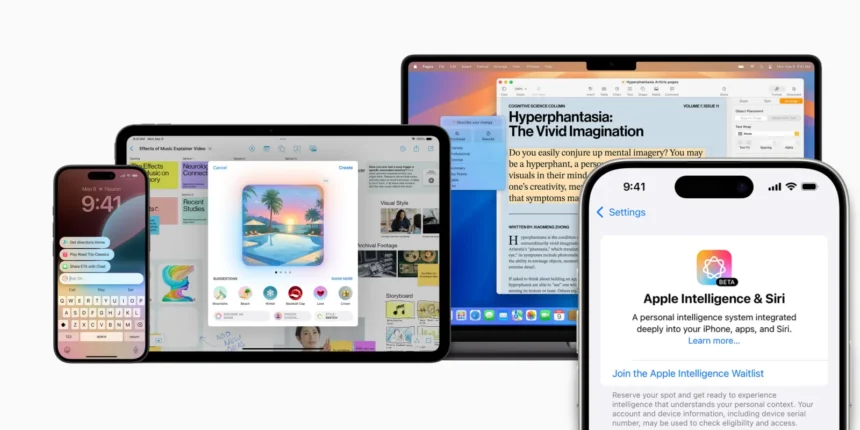Apple is rolling out its new suite of AI-driven features, Apple Intelligence, across its devices with the latest iOS, iPadOS, and macOS updates. At the same time, Apple is making its final shift to USB-C ports for all peripherals, marking the end of an era for its proprietary Lightning connector. These two updates highlight Apple’s dual focus on integrating AI and embracing universal connectivity standards.
What’s Happening & Why This Matters
Apple Intelligence Debuts with Enhanced Features
The latest updates— iOS 18.1, iPadOS 18.1, and macOS Sequoia 15.1 — introduce Apple Intelligence, the company’s AI-powered tools aimed at enhancing productivity and personalization. Users with compatible devices can join a waitlist to access these new features (smart writing tools, notification summaries, and the “reduce interruptions” focus mode). Specific apps receive specialized upgrades (i.e., Photos is equipped with natural language search, memory creation from text prompts, and object removal capabilities). Mail and Messages also gain smart reply features for auto-generating context-based responses.

Apple’s roadmap for Apple Intelligence includes upcoming additions like Genmoji, ChatGPT integration, and visual intelligence tools, expected in December. However, access varies by region. While U.S. users have immediate access on supported devices, EU users face restrictions as Apple Intelligence on iPhones and iPads launches in April.
Apple’s Transition to USB-C
Alongside software updates, Apple has updated its Mac accessories — Apple Intelligence Released As Last Apple Peripherals Move to USB-CMagic Keyboard, Magic Mouse, and Magic Trackpad — to feature USB-C ports. USB-C adoption phases out the Lightning connector that served as a staple connection since 2012. Apple’s adoption of USB-C across its product line, influenced by EU regulations, mandates a standardized charging port. With these changes, M4 iMac users can streamline charging all their Apple devices from a single USB-C cable. There is no understating this daily convenience .

The switch to USB-C has been gradual. While Apple integrated USB-C in iPads and MacBooks earlier, the iPhone 15 solidified the transition by abandoning Lightning. Now, only the iPhone SE and iPhone 14 retain Lightning ports with refreshed production likely to update to USB-C. Shifting to USB-C aligns Apple with industry standards and brings a universal approach to connectivity that drives positive user satisfaction.
TF Summary: What’s Next
Apple’s dual updates, alongside the M4 iMac release, underline its focus on user convenience and technological innovation. As Apple gradually deploys Apple Intelligence, it’s set to enhance device functionality, making AI more accessible across Apple’s ecosystem. Meanwhile, the final transition to USB-C promotes compatibility and environmental efficiency.
— Text-to-Speech (TTS) provided by gspeech


